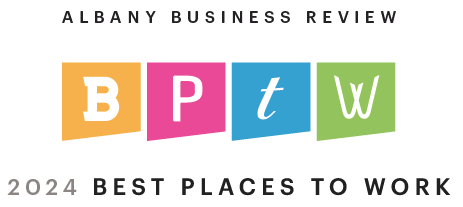Paycheck Protection Program Loan Forgiveness
Apr 14, 2020UPDATE MAY 18
From the Small Business Administration:
Loan Forgiveness
Forgiveness is based on the employer maintaining or quickly rehiring employees and maintaining salary levels. Forgiveness will be reduced if full-time headcount declines, or if salaries and wages decrease. The loan forgiveness form and instructions include several measures to reduce compliance burdens and simplify the process for borrowers, including:
• Options for borrowers to calculate payroll costs using an “alternative payroll covered period” that aligns with borrowers’ regular payroll cycles
• Flexibility to include eligible payroll and non-payroll expenses paid or incurred during the eight-week period after receiving their PPP loan
• Step-by-step instructions on how to perform the calculations required by the CARES Act to confirm eligibility for loan forgiveness
• Borrower-friendly implementation of statutory exemptions from loan forgiveness reduction based on rehiring by June 30
• Addition of a new exemption from the loan forgiveness reduction for borrowers who have made a good-faith, written offer to rehire workers that was declined
UPDATE MAY 13:
Today, he SBA announced that it will deem any PPP loan applicant who applied for a loan under $2,000,000 to have acted in good faith when they certified that their loan was necessary due to current economic uncertainty. See link to the new FAQ, specifically question 46.
This should provide most of our clients with some peace of mind on this issue as those whose loans are under 2 million are safe harbored from inquiry on whether they were necessary.
If you have any questions, please do not hesitate to ask your TRP attorney. If for some reason this guidance shifts, we will alert you.
UPDATE MAY 6:
As the Small Business Administration (SBA) continues to release new guidance regarding Paycheck Protection Program (PPP) loans, it is becoming clear that these loans are likely to face substantial scrutiny in the days, months and maybe eve years, following the issuance of the loans. The focal point that has emerged for this scrutiny is the good faith certification made on the loan application that “[c]urrent economic uncertainty makes this loan request necessary to support the ongoing operations of the Applicant.” The SBA has recently utilized this language to encourage several companies to return loan funds; notably Shake Shack and Ruth’s Chris. The SBA has also announced that it will review all loans over $2 Million and may also review smaller loans.
It is clear that internal documentation will be a crucial part of any PPP loan recipient’s tool kit to protect itself in the event that a review occurs. It is advisable that substantial records are kept relative to the PPP loan. One key piece of documentation each and every PPP loan recipient should have is an internal memorandum documenting that the company has analyzed whether the PPP loan is necessary to support the ongoing operations of the applicant. This memorandum should include items such as prior revenues, current revenues, available sources of liquidity (or lack thereof), sales volume before COVID 19 and now, operation levels before COVID 19 and now, reduction in force figures, and more. Such a memorandum will illustrate that the company engaged in good faith analysis in reaching its determination regarding the necessity of the PPP loan.
Also, as of May 5, 2020, PPP applicants who believe that recent guidance has cast doubt on their continued loan eligibility now have until May 14, 2020 to return the loan proceeds without any jeopardy attaching.
If you would like assistance in your PPP loan compliance, please contact your TRP attorney.
UPDATE MAY 3:
The SBA release additional FAQ guidance. Of note, and particulary relevant to some inquires we have had from clients.
- Question: Will a borrower’s PPP loan forgiveness amount (pursuant to section 1106 of the CARES Act and SBA’s implementing rules and guidance) be reduced if the borrower laid off an employee, offered to rehire the same employee, but the employee declined the offer?
Answer: No. As an exercise of the Administrator’s and the Secretary’s authority under Section 1106(d)(6) of the CARES Act to prescribe regulations granting de minimis exemptions from the Act’s limits on loan forgiveness, SBA and Treasury intend to issue an interim final rule excluding laid-off employees whom the borrower offered to rehire (for the same salary/wages and same number of hours) from the CARES Act’s loan forgiveness reduction calculation. The interim final rule will specify that, to qualify for this exception, the borrower must have made a good faith, written offer of rehire, and the employee’s rejection of that offer must be documented by the borrower. Employees and employers should be aware that employees who reject offers of re-employment may forfeit eligibility for continued unemployment compensation.
UPDATE MAY 1:
The IRS has released guidance regarding tax implications for businesses that have taken the PPP loan and were granted forgiveness.
“Specifically, this notice clarifies that no deduction is allowed under the Internal Revenue Code (Code) for an expense that is otherwise deductible if the payment of the expense results in forgiveness of a covered loan … and the income associated with the forgiveness is excluded from gross income for purposes of the Code pursuant to … the CARES Act.”
Businesses who applied for Paycheck Protection Program (“PPP”) loans should be aware that the Small Business Administration (“SBA”) will be issuing more guidance on loan forgiveness in the coming days. We at Towne, Ryan & Partners (“TRP”) plan on holding a new webinar on forgiveness within days of the release of that new guidance and will announce the final date once guidance is released.
Now is also a good time to remember that there are already significant documentation requirements for forgiveness set forth in the law. PPP loan borrowers should be collecting the following documentation, explicitly required by the CARES Act, in anticipation of their loan forgiveness applications:
- Documentation verifying the number of Full Time Equivalency employees on payroll and pay rates including payroll tax filings reported to the IRS and State income, payroll, and unemployment insurance filings;
- Documentation, including cancelled checks, payment receipts, transcripts of accounts, or other documents verifying payments on covered mortgage obligations, payments on covered lease obligations, and covered utility payments.
Undoubtably, documentation will be crucial to attaining maximum forgiveness and businesses should err on the side of retaining more documentation than necessary.
We at TRP are following the legal changes to this law closely and continue to update our website with the most current information. Stay tuned and do not hesitate to call your TRP attorney with any questions you may have regarding your PPP loan application or loan forgiveness.
These alerts are provided for information purposes only and does not constitute legal advice and is not intended to form an attorney client relationship. Please contact Towne, Ryan & Partners, P.C. for additional information.
Share














